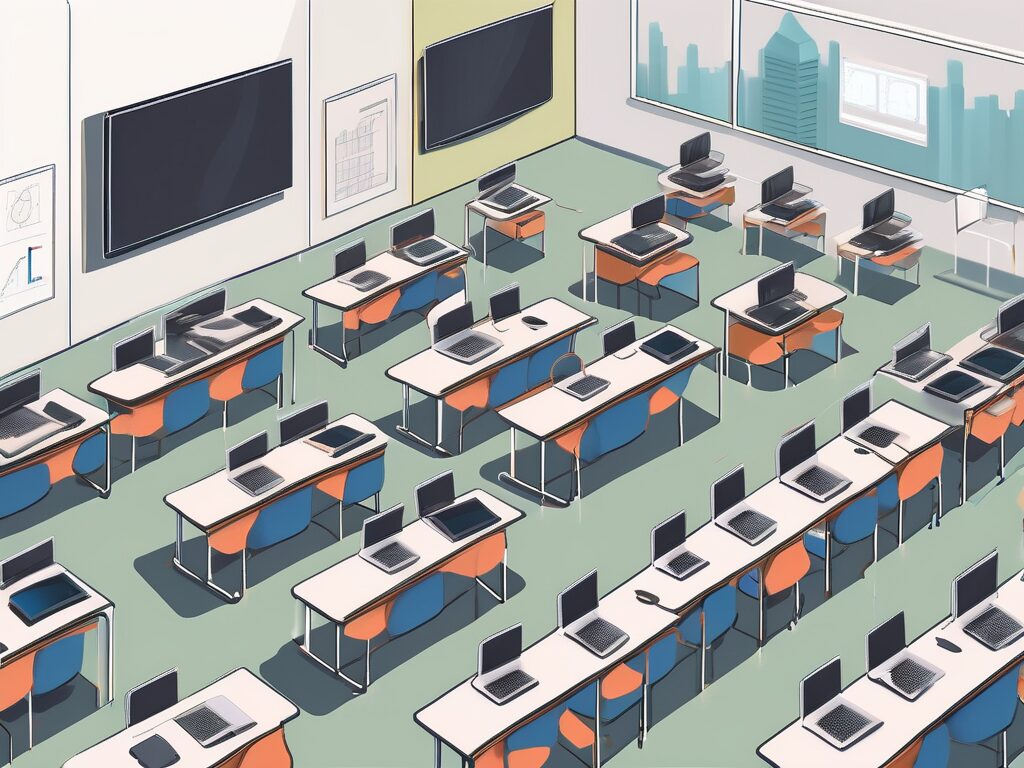The integration of technology into classrooms has become a significant trend in education worldwide, and Hong Kong is no exception. The city’s education system has embraced the use of the Interactive Qualitative Teaching System (IQTS) to enhance learning experiences. This article will delve into four methods that Hong Kong classrooms are employing to incorporate technology via IQTS.
Method 1: Interactive Whiteboards
Interactive whiteboards have become a staple in many Hong Kong classrooms. These high-tech boards are a part of the IQTS and offer a plethora of benefits to both teachers and students. They allow for a more interactive and engaging learning experience, which can boost student participation and comprehension.
Interactive whiteboards are not just glorified projection screens. They are dynamic tools that can display videos, play audio clips, and even allow students to interact with the content on the screen. For instance, during a geography lesson, students can zoom in on a particular region on a digital map, or during a maths lesson, students can solve problems directly on the board.
Interactive whiteboards are akin to the blackboards of yesteryears, but with a technological twist. They are a testament to how far classroom technology has come, transforming the traditional teacher-centred classroom into a more student-centred learning environment.
Method 2: Mobile Learning
Mobile learning, or m-learning, is another method that Hong Kong classrooms are using to integrate technology. With the ubiquity of smartphones and tablets, m-learning has become a practical and effective way to deliver educational content.
Through m-learning, students can access educational materials anytime, anywhere. This flexibility can be particularly beneficial for students who may need extra time to grasp certain concepts. Moreover, m-learning can also cater to different learning styles. For instance, visual learners can benefit from video content, while auditory learners can benefit from podcasts.
Think of m-learning as having a portable classroom in your pocket. It’s like carrying a library, a science lab, and a language lab all in one device. It’s a revolutionary way of learning that breaks down the walls of the traditional classroom.
Method 3: Virtual Reality (VR)
Virtual reality (VR) is a relatively new addition to the technological tools used in Hong Kong classrooms. VR can create immersive, three-dimensional environments that can make learning more engaging and fun.
Imagine exploring the Great Wall of China without leaving the classroom, or diving into the human body to learn about the circulatory system. These are just a few examples of how VR can be used in education. It can bring abstract concepts to life, making them easier to understand and remember.
VR in education is like taking a field trip without the logistical headaches. It’s a unique blend of entertainment and education, a concept often referred to as ‘edutainment’. While it’s still in its early stages, VR holds great potential in revolutionising the way we teach and learn.
Method 4: Learning Management Systems (LMS)
Learning Management Systems (LMS) are another technological method being utilised in Hong Kong classrooms. An LMS is a software application that allows for the administration, documentation, tracking, and delivery of educational courses or training programs.
An LMS can help teachers manage their workload more efficiently. They can use it to track student progress, administer tests, and even communicate with students. For students, an LMS can provide a centralised platform where they can access course materials, submit assignments, and interact with their peers.
Think of an LMS as a digital classroom. It’s a one-stop-shop for all things related to a course or a subject. It’s a tool that can streamline the teaching and learning process, making it more organised and efficient.
In conclusion, technology is reshaping the landscape of education in Hong Kong. Through the use of interactive whiteboards, mobile learning, virtual reality, and learning management systems, classrooms are becoming more dynamic and engaging. As technology continues to evolve, we can expect to see even more innovative methods being introduced into the education system.
Advance Your Teaching Career with iQTS
As technology revolutionizes education in Hong Kong, the demand for qualified teachers with a deep understanding of innovative teaching methods is on the rise. The IQTS at UWE offers the International Qualified Teacher Status (iQTS) Programme, specifically designed to elevate your professional credentials and prepare you for the global classroom. By joining our iQTS programme, you’ll not only enhance your ability to integrate technology in education but also significantly improve your career progression, professional network, and adaptability to international curricula. Don’t let the opportunity to advance your teaching career pass you by. Make Your Next Step today and join a community of educators transforming the future of learning.

